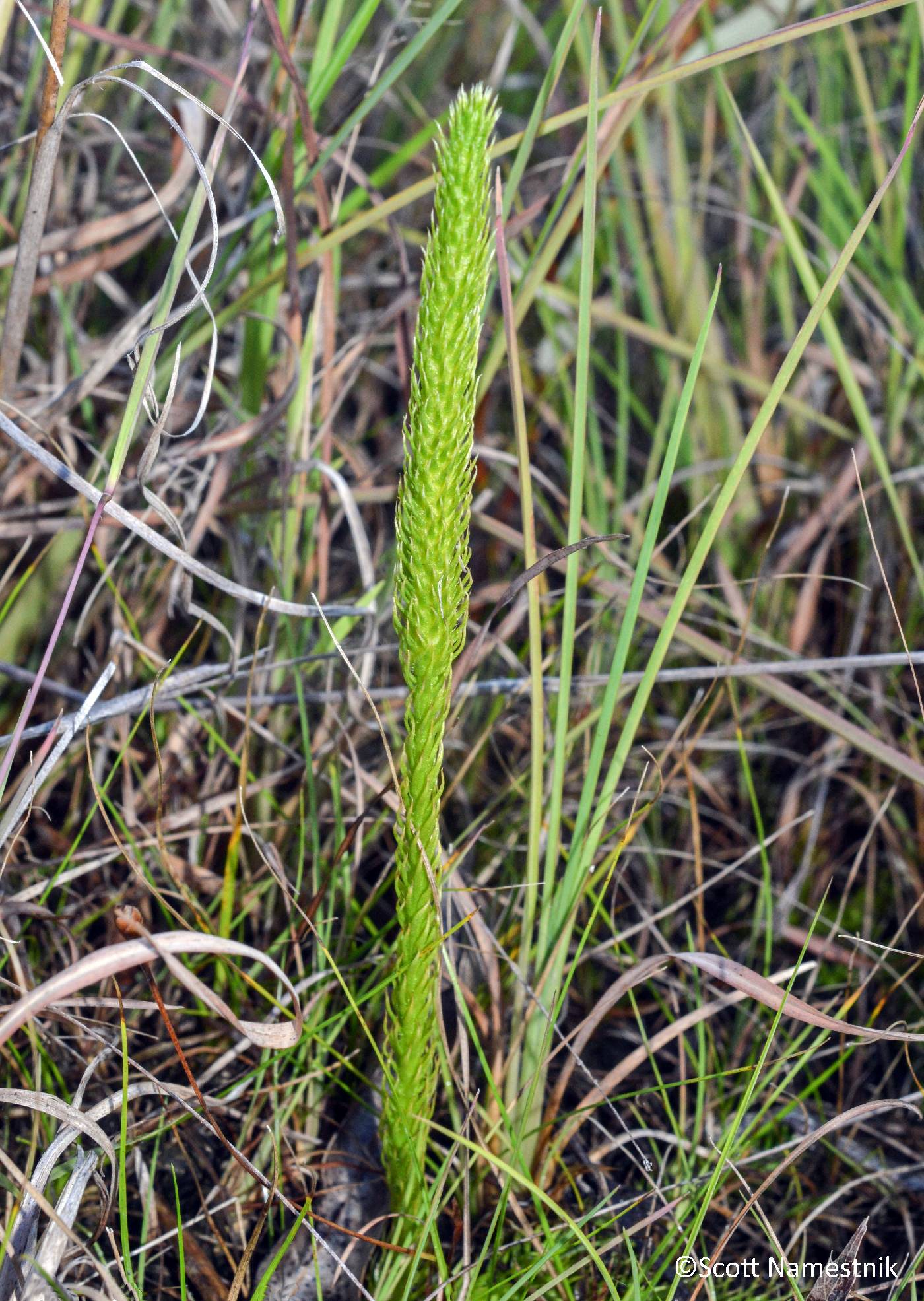Lycopodiella
|
Family: Lycopodiaceae |
Plants creeping on wet ground. Roots emerging immediately on underside of stems. Horizontal stems on substrate surface, supine or arching. Upright shoots forming very leafy peduncles scattered along horizontal stems, 2--9 mm diam., unbranched. Gemmiferous branchlets and gemmae absent. Strobili solitary, fully differentiated from peduncle or peduncle not differentiated, tip blunt to ± acute; peduncle leafy, leaves not in distinct ranks, not imbricate, usually monomorphic, linear-lanceolate, margins commonly with a few teeth; sporophylls generally longer than peduncle leaves. Sporangia nearly globose. Spores rugulate, sides at equator convex, angles acute. Gametophytes photosynthetic, on substrate surface, pincushion-shaped; ring meristem absent. x = 78. This concept of Lycopodiella excludes the segregate genera Pseudolycopodiella (including Lycopodium carolinianum) and Palhinhaea (including Lycopodium cernuum). It has been treated as Lepidotis Palisot de Beauvois ex Mirbel, but this is a later name for Lycopodium . Species of Lycopodiella hybridize readily (see reticulogram). Hybrids between species of the same ploidy level are apparently fertile with normal meiosis and spores, but those between different ploidy levels are sterile (J. G. Bruce 1975).
|

